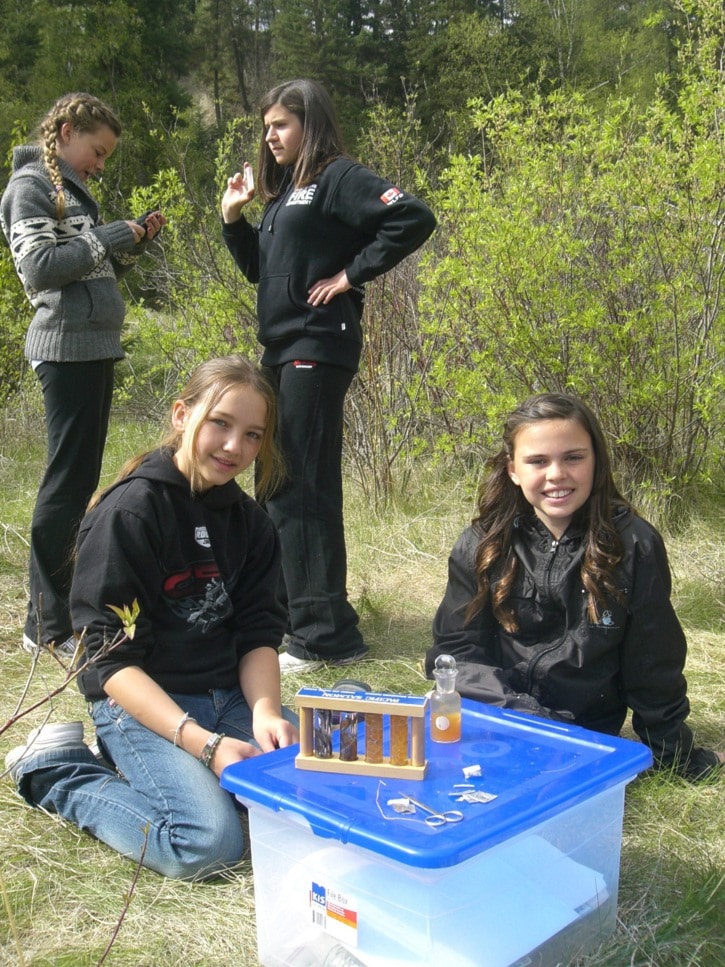Every year the Water Wise program in Williams Lake and the surrounding area offers field trips to schools so that students can see in practice what they have been learning about in classroom sessions throughout the school year.
Water Wise has been running since 2006, a partnership between the Cariboo Chilcotin Conservation Society and the City of Williams Lake.
During that time thousands of students have learned about the city’s aquifer and how to protect it into the future.
Classes have the option of three field trips: city water and sewage tours; river valley water quality and ecosystem work; or storm drain painting.
The first trip is in partnership with the city water staff.
Students and teachers have a tour of the pump stations at Scout Island to see how water is pumped out of the aquifer and distributed to households and businesses. They see how chlorine is made safely from salt and a small quantity is added to the water to protect it as it is distributed through 100 kilometres of water pipes into homes, schools and businesses.
The next stop is above the storm drain retention ponds so that students can learn how these ponds protect the watershed by collecting and storing pollutants mixed in road run-off.
Then it is time to walk, following the Williams Lake River Valley Trail beside the river all the way to the sewage lagoons.
Here city staff meet the class again for the second part of the tour, teaching what not to put down drains as Williams Lake waste water eventually ends up in the Fraser River.
While the sewage plant may not traditionally be a favourite field trip destination, it is certainly memorable and the information learned here will help students understand better how we each impact the environment and ways to reduce the pollutants we all add to watersheds.
The second field trip is in partnership with Scout Island Nature Centre.
Students take water samples from the river and learn how to analyze the water for oxygen, temperature, pH, phosphates and nitrates.
They also learn about aquatic ecosystems in the marsh, and the important role that marshes play both to maintain and improve water quality as well as nourishing a rich diversity of life, providing habitat for the bottom end of many food chains.
The last Water Wise field trip offered is to paint yellow fish beside storm drains as a reminder to residents that these drains connect to creeks and to be aware that whatever goes down the drain will shortly become part of a local waterway. Residences in the vicinity of the painted storm drains receive information to remind them that only clean water should go down the drain.
The value of these field trips becomes evident when reading letters from students about what they have learned on these trips and they are now an integral part of the Water Wise program.
For more information on Waste Wise or Water Wise and any of our school and community programs, contact the Cariboo Chilcotin Conservation Society at sustain@ccconserv.org or visit the website at www.cconserv.org.
